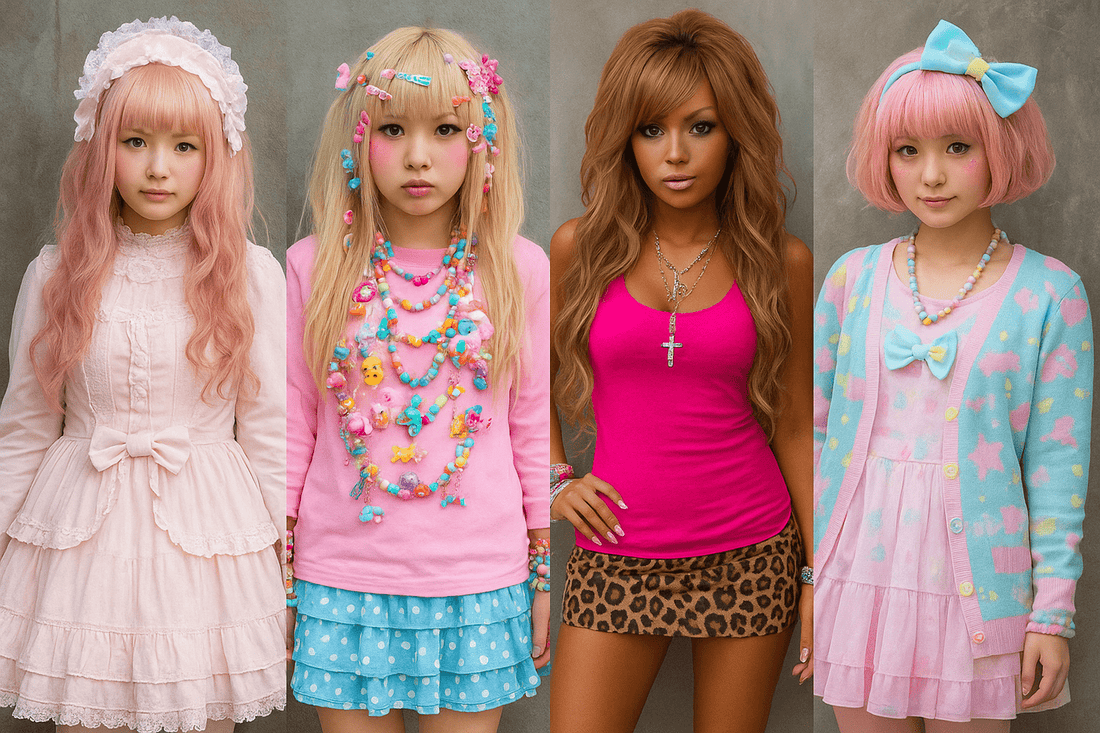
Frequently Asked Questions About Harajuku Style Fashion
Share
🌈✨ Discover Your Harajuku Dream Look! ✨🌈
Kawaii, edgy, pastel, or punk—whatever your vibe, we’ve got the fashion magic to match it. 💖👗
🛍️ Shop Harajuku Style Fashion NowLolita, Harajuku, Gyaru, Fairy Kei, Decora, Kawaii: Untangling the Mess
Fashion scenes in Japan don’t run on rules—they run on chaos, instinct, and rebellion. Outsiders look at it and think everything neon and layered is “Harajuku.” Wrong. Harajuku isn’t a single style. It’s a district in Tokyo that turned into a pressure valve for people tired of looking the same. From that place, movements exploded: Lolita, Decora, Gyaru, Fairy Kei, and more. Each one has teeth, history, and a mood you can’t fake.
Let’s answer the questions everyone throws at Google when they’re lost in this world.
What’s the difference between Lolita and Harajuku?
Lolita is one branch. Harajuku is the whole tree.
- Lolita: Silhouettes from the Victorian and Rococo eras. Petticoats stacked high. Lace everywhere. Looks like dolls but built by rebels.
- Harajuku: A culture. A neighborhood. A street fashion free-for-all.
All Lolita belongs under Harajuku’s umbrella. Harajuku itself refuses categories.
Read a breakdown of Harajuku substyles here.
What is Harajuku famous for?
Harajuku is known for kids walking the streets in looks that spit in the face of uniform culture. Layers from thrift bins. Outfits that look like cartoons, nightmares, or art installations. A mix of punk, goth, pastel, cyber, and whatever else fit that morning.
It’s not just fashion—it’s defiance. In the 80s and 90s, it became a stage where youth built their own identity. Today, the spirit still lingers, even if Harajuku fashion in Japan has shifted.
How do you dress in Harajuku style?
You don’t copy. You build.
- Stack layers until it feels wrong. Then keep it.
- Clash eras: a corset with a neon hoodie, a tutu with combat boots.
- Hack your clothes. Cut, sew, destroy, tape.
- Color doesn’t obey harmony. Pastel with black, neon with plaid.
This beginner’s guide gives a map, but the real rule is: no map.
Is gyaru a Harajuku style?
No. Gyaru came out of Shibuya in the 90s. But Harajuku absorbed it like it absorbs everything. You’ll see gyaru influence on Harajuku streets, but it’s not born there.
What makes a girl a gyaru?
Tanned skin. Heavy eyeliner. Lashes stacked thick. Long nails painted loud. Hair bleached, teased, curled. Animal prints. Miniskirts. Platform heels.
Gyaru is rebellion against “proper” beauty in Japan. It’s loud, confrontational, unashamed.
What is Fairy Kei?
Fairy Kei is pastel overload. Childhood cartoons from the 80s and 90s turned into outfits. Tutus, legwarmers, toy jewelry, My Little Pony sweaters. The look is sugar, but the intent is serious: holding onto nostalgia and weaponizing it.
What is the difference between kawaii and Harajuku?
Kawaii means “cute.” Pink bows, mascots, plush charm bracelets. It’s a cultural aesthetic bigger than clothes.
Harajuku is a place where cute collides with goth, punk, cyber, glam, horror. Some Harajuku styles are kawaii. Others are nightmares.
What theme is Harajuku?
Freedom. No single theme. It mutates constantly.
What is the difference between Harajuku and Decora?
Decora piles on plastic. Hair clips by the dozens. Stickers on cheeks. Layered shirts. Bracelets stacked to the elbow. Looks like a toy store exploded.
Harajuku is the ecosystem. Decora is one creature inside it. Read more about Decora and other substyles.
What is the meaning of Harajuku girl?
In Japan, it means someone who dresses in Harajuku fashion. Outside Japan, the term turned into a stereotype after Gwen Stefani used it in the 2000s. At its core, though, a “Harajuku girl” is someone who refuses to mute their style.
For more, read Harajuku style vs. Harajuku fashion.
Final Word
Harajuku is not a costume. It’s not cosplay. It’s not a “trend.” It’s a public diary written in fabric, safety pins, wigs, bows, leather, makeup, thrift rags, and plastic jewelry. Lolita, Fairy Kei, Decora, Gyaru—they’re all languages spoken on the same street.
That’s why Harajuku still matters. It never settles. It never matches. It never apologizes.
